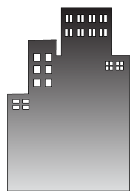Increasing
ROI on Aging Building Automation Control Systems
A growing number of facilities are now incorporating BAS refurbishment
programs into their maintenance operations.
Brandon Baisas
Content Manager
ASSET Technologies
|
March 2013 |
[an error occurred while processing this directive] |
|
Increasing
ROI on Aging Building Automation Control Systems |
Brandon Baisas Content Manager ASSET Technologies |
| Articles |
| Interviews |
| Releases |
| New Products |
| Reviews |
| [an error occurred while processing this directive] |
| Editorial |
| Events |
| Sponsors |
| Site Search |
| Newsletters |
| [an error occurred while processing this directive] |
| Archives |
| Past Issues |
| Home |
| Editors |
| eDucation |
| [an error occurred while processing this directive] |
| Training |
| Links |
| Software |
| Subscribe |
| [an error occurred while processing this directive] |
 What do we normally
think of first when dealing with aging building
automation control systems (BAS)? We might think of issues
like version obsolescence, part availability, and reliability.
And if a new product is already on the market, it is a good possibility
that original system parts are no longer available through an Original
Equipment Manufacturer (OEM).
What do we normally
think of first when dealing with aging building
automation control systems (BAS)? We might think of issues
like version obsolescence, part availability, and reliability.
And if a new product is already on the market, it is a good possibility
that original system parts are no longer available through an Original
Equipment Manufacturer (OEM).
And because of
this, we might have questions like “What
if a control panel fails?”, or “How
long will it take to get my system up and running?”, and perhaps
the most important question of all: “How much will it cost me to upgrade if a
control panel is no longer available?”
These questions
become more prevalent the older a building automation system
gets. And let’s face it: It is a good possibility that BAS
panels in facilities can range from five to ten years or older.
However, while purchasing new equipment might be preferable, a wise
building owner is always cost-conscious and mindful of their budget
spending.
And taking into
consideration all the possible system failures that could happen in a
given year (lightning strikes, water damage, etc.), new upgrades could
represent a significant cost to an owner as the amount of panel
replacements stack-up.
So how can a building owner reduce these costs? To answer this,
let us first examine the equipment in question:
The inside of a building control
panel is basically a big circuit board, with mounted components such as
capacitors, processors, and transistors. And, like any other
electronic equipment, a damaged circuit board can be repaired.
Components can be replaced, and corrosion can be cleaned up.
In themselves, board components are relatively inexpensive. And
as long as you use UL components that match a manufacturer’s
specifications, you can restore an entire circuit board back to new
part specifications. By doing this you are essentially restoring
an entire BAS panel, and ultimately extending its life-cycle
indefinitely.
And so the biggest
benefit to panel refurbishment? Cost-savings.
Because of this, many building owners are implementing new
refurbishment programs specifically for aging building automation
control panels. By refurbishing their existing equipment,
building owners are prolonging their systems life-cycle, which
increases return on their original investment (ROI). Not only has
this practice greatly reduced budget spending per facility, it is also
easy to implement. Here is how a successful refurbishment program
is possible:
-First, finding a credible source
for board repair is crucial:
Although a control panel may be old, it still represents a capital
asset that originally cost a substantial amount of money. And so
you want to choose a repair firm that assuredly guarantees their work
and can successfully restore your board back to new-part
functionality. Here are some ways to verify a board repair
source’s credibility:
-Second, establish
a flat price per refurbished unit agreement. This way, you can
compare apples to apples: Refurbishment vs. New Purchase. If a
repair is based upon T&M (time and material), it might not be worth
the trouble if the cost to refurbish surpasses the cost to purchase new.
[an error occurred while processing this directive] -Lastly, hold on to any spare control panels, whether taken out of the field from previous upgrades or other retrofits. The objective here is to build a small, revolving inventory of spare parts. This can play a huge role in reducing system down-time when a control panel fails: When a panel fails in the field, you can simply swap it out with a spare unit from stock.
By implementing these new programs into their maintenance operations,
building owners are not only able to resolve many of the pressing
issues associated with aging equipment, they can also reduce budget
spending for new parts, increase part availability, and minimize system
down-time.
In conclusion, the cost-savings captured from refurbishing panels for
aging building automation systems has allowed building owners to
increase ROI for their existing equipment. With the pressure to
spend for new replacements lessened, owners have been able to dedicate
a more staggered approach to budgeting for future upgrades. As a
result, a growing number of facilities are now incorporating BAS
refurbishment programs into their maintenance operations.
About the Author
Brandon Baisas is the content manager for ASSET Technologies.
He has been involved in the building automation controls industry for
three years, and is currently responsible for all content publishing
for his company. For more information, contact him at: 502-425-8702, brandonb@a-techs.net, www.a-techs.net
[an error occurred while processing this directive]
[Click Banner To Learn More]
[Home Page] [The Automator] [About] [Subscribe ] [Contact Us]